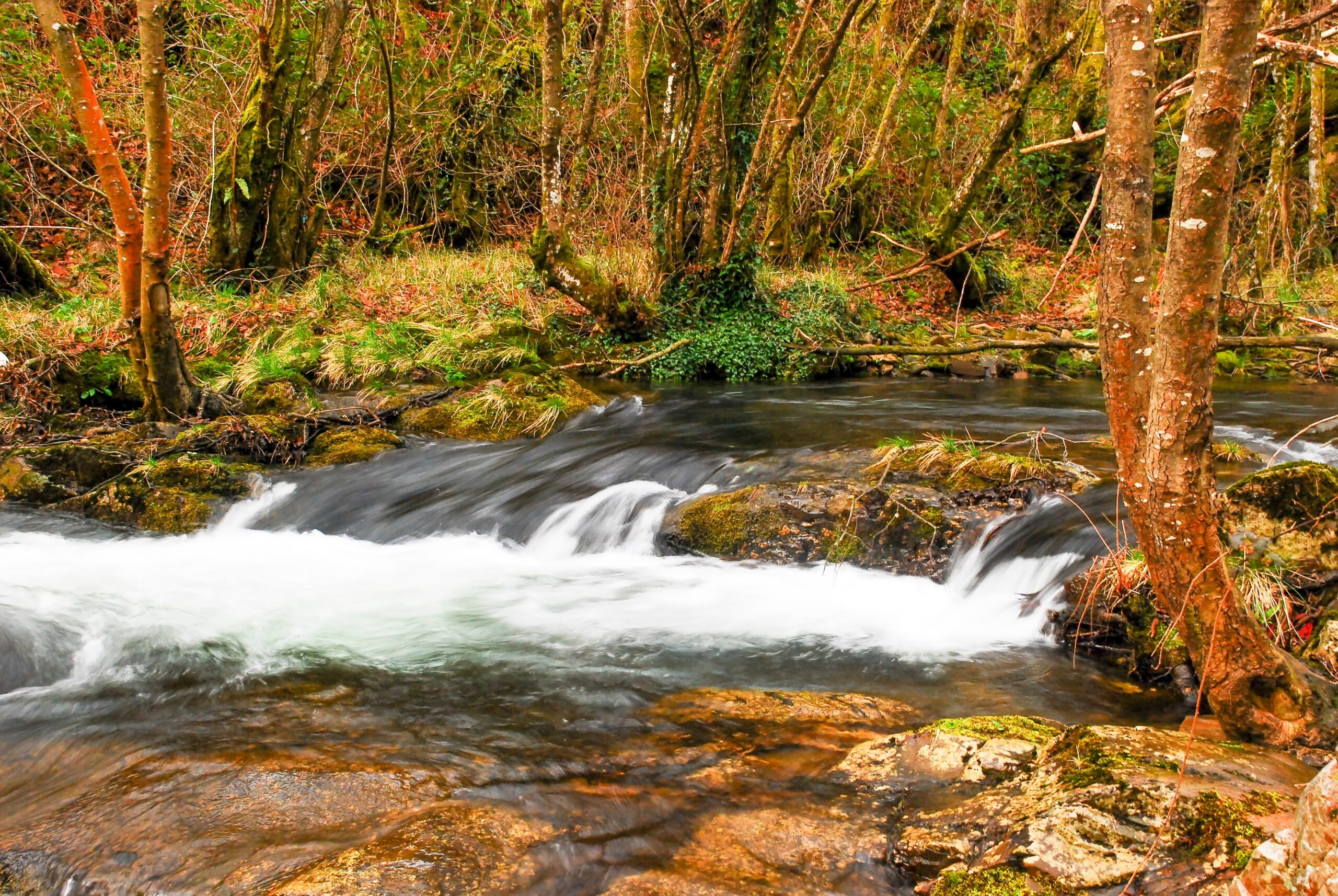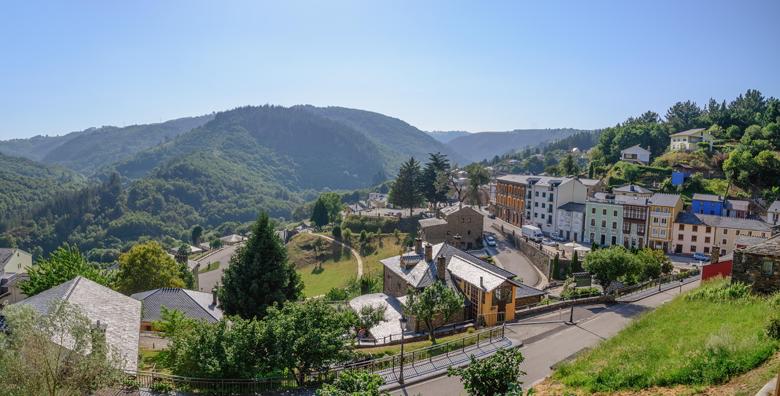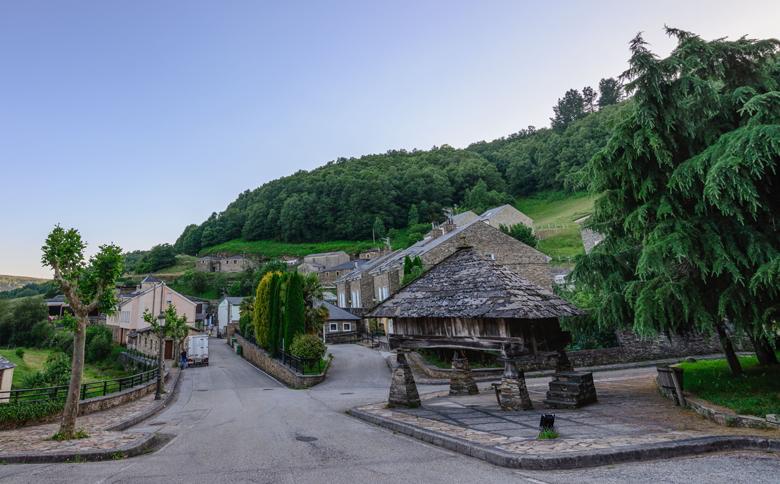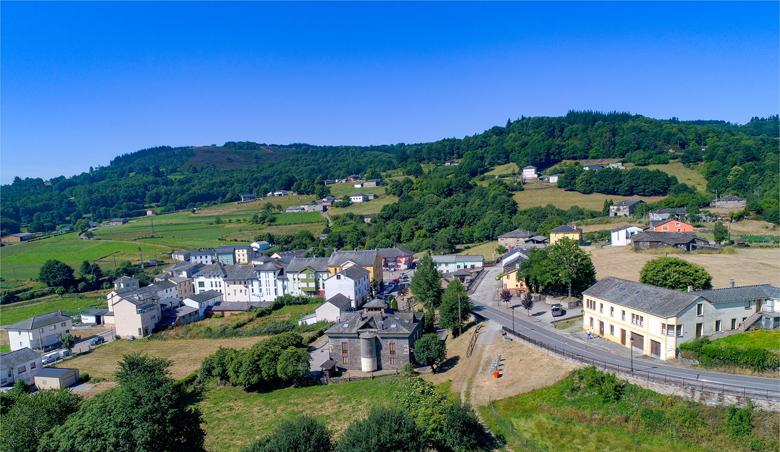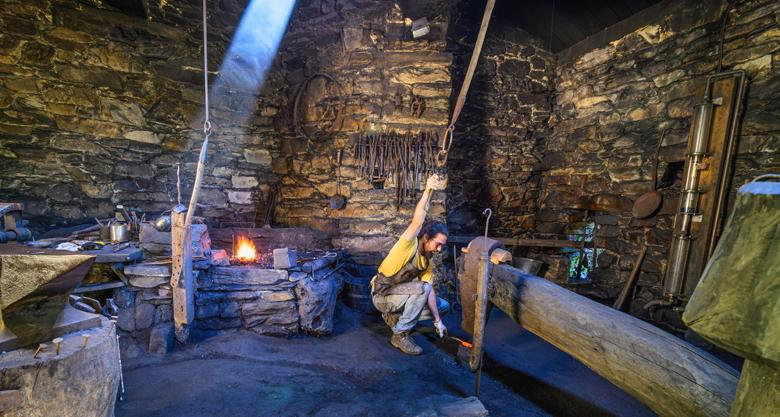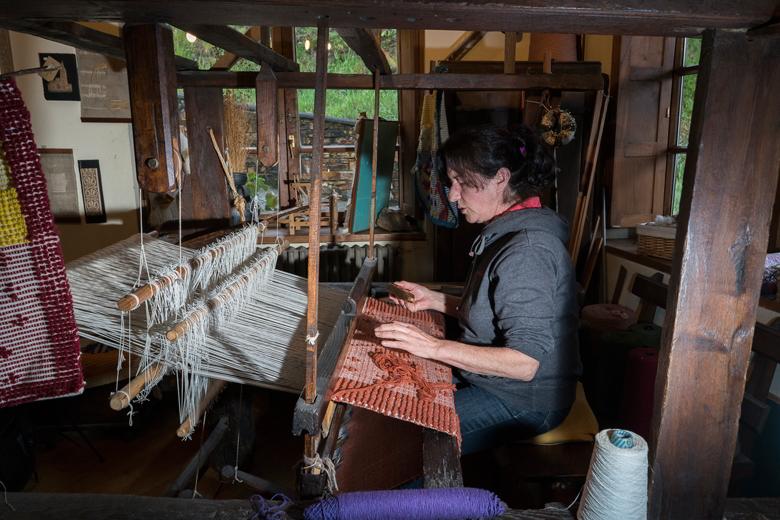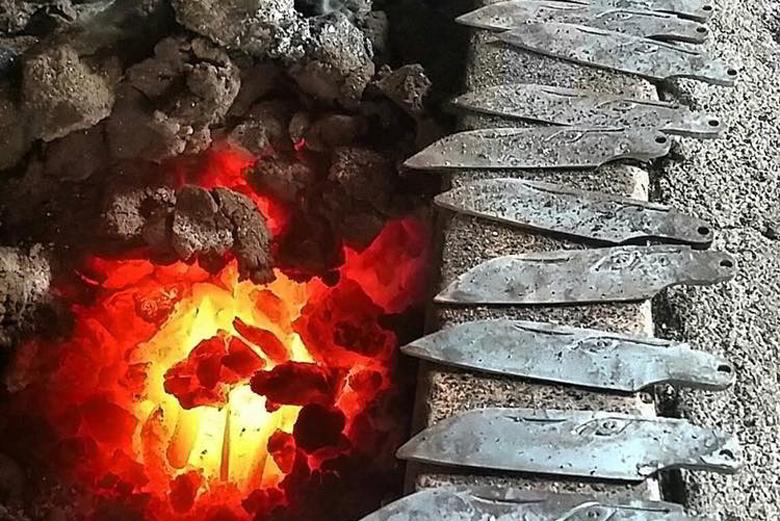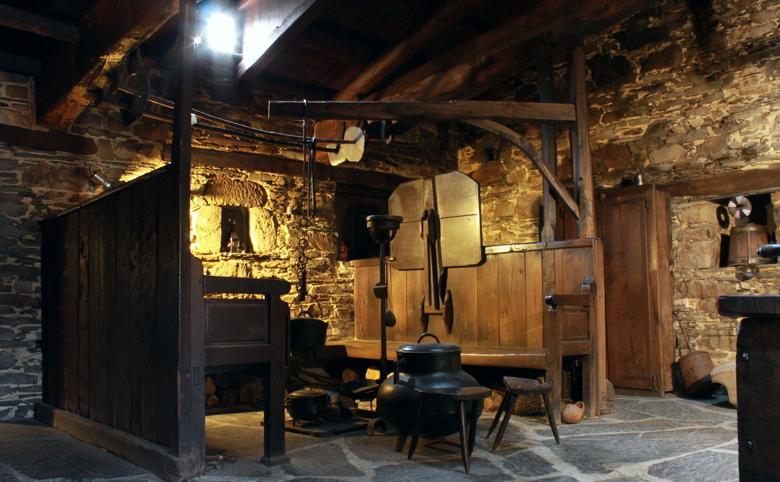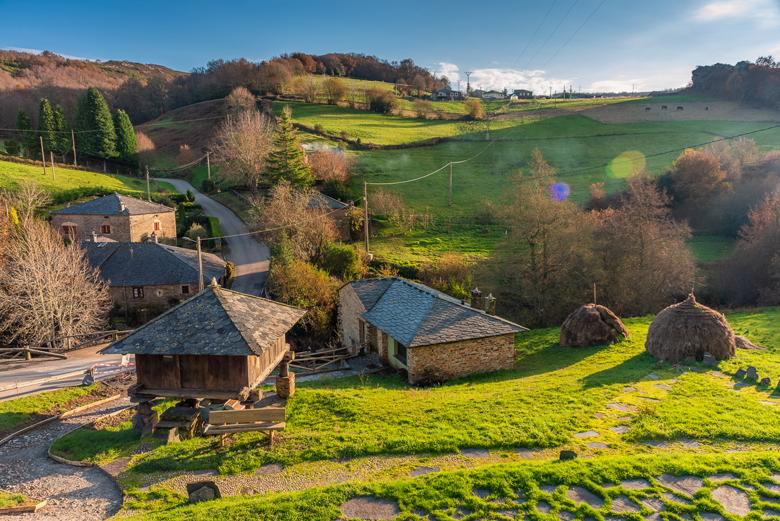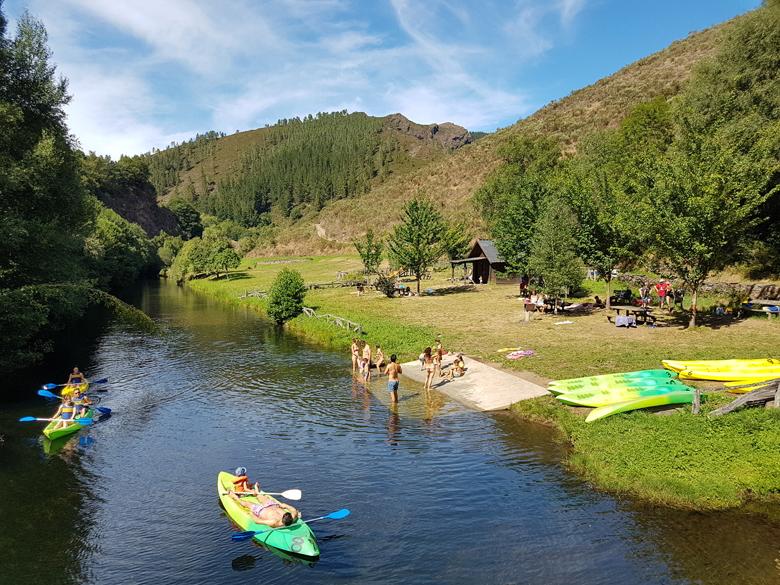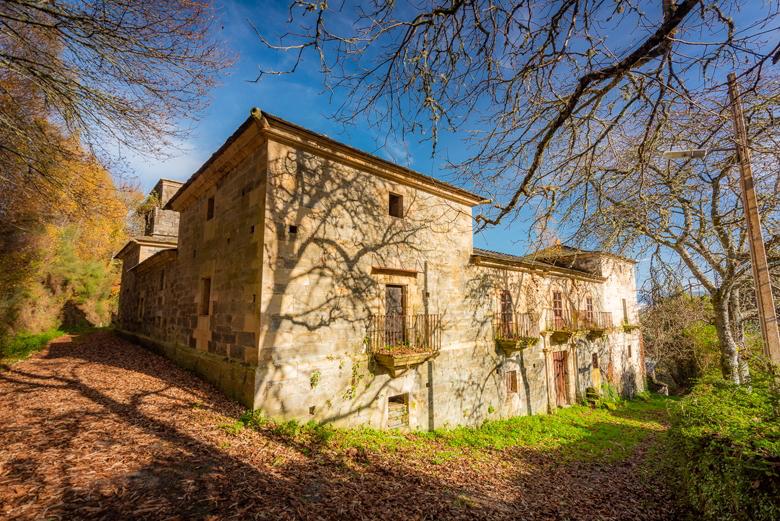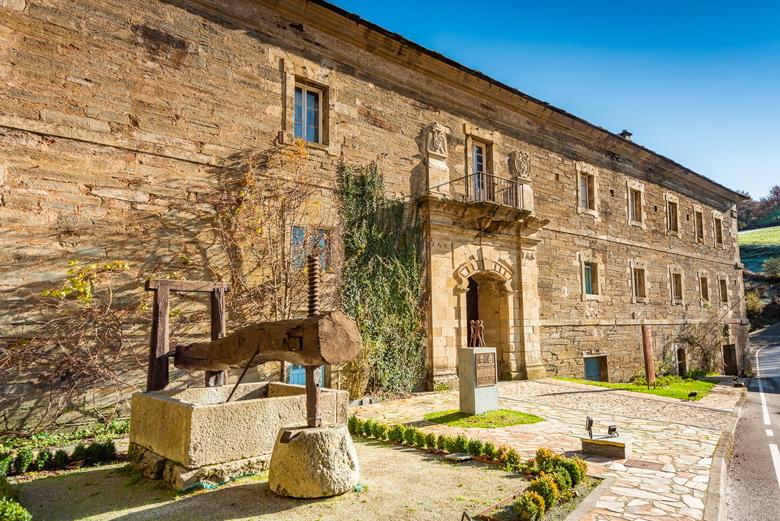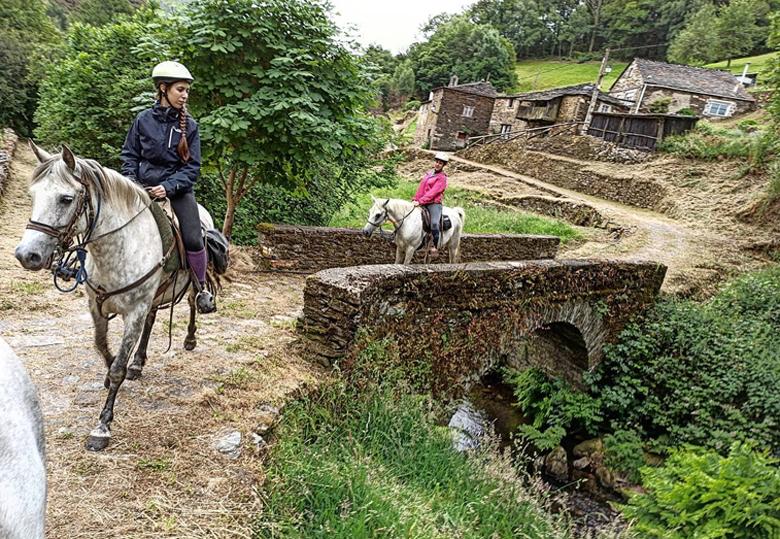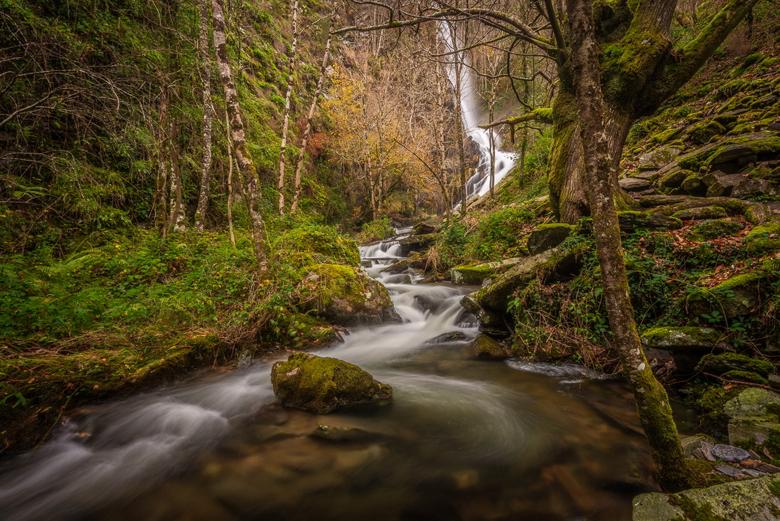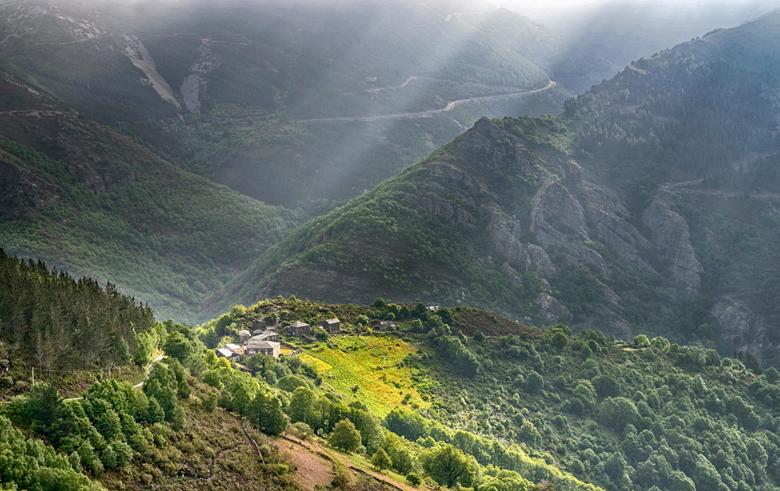Top 10 things to see and do in Los Oscos
Redacción Oscos-Eo 08.04.2025
- San Martín de Oscos
- Santa Eulalia de Oscos
- Villanueva de Oscos
The Oscos are three in one: Santa Eulalia, San Martín and Villanueva. Three peaceful places with dozens of options to enjoy your vacation. Here we suggest 10 irresistible plans.
There is a place like in a fairy tale, a place made of quiet villages, and soft mountains, of little pieces of forest and small rivers and waterfalls. A place where the green of the Asturian nature merges with the black of the slate of its naked architectures, and where fire and iron have found the home of their dreams. That place is called Los Oscos, and among many other distinctions and awards it has the Exemplary Village of Asturias 2016.
The Oscos are three in one: Santa Eulalia, San Martín and Villanueva, and the three municipalities bear the surname De Oscos, and they are proud of it. Three peaceful places where, in addition to the serene beauty of the landscape, the sweet hospitality of its inhabitants, always ready to make their home your home…
Pure western Asturias!
They are also part of the Biosphere Reserve Oscos-Eo, which of the 7 that Asturias has, is the only one that overlooks the coast, allowing you to enjoy a stay in the mountains, with the advantage of having fantastic beaches just half an hour’s drive away.
There are many options to see and do in Los Oscos. Here are 10 suggestions that we hope will not fall on deaf ears…
01. A world of “ferreiros
The Oscos are a world of blacksmiths or “ferreiros”. A world where the hydraulic devices, which used as raw materials such as water, fire and iron have marked a whole life and a whole era.
A living testimony of this reality is the village of Mazonovo, remote and cozy as they come, located in the council of Santa Eulalia de Oscos, and where one of the oldest “forges” that exist in Asturias is preserved, and which dates back to the early eighteenth century.
This “ferrería” can be visited and is well worth a visit, with its huge water wheel and its “banzao” (water tank). In addition, the descent along the road is of a singular beauty, contemplating the village of Mazonovo bathed by the river Agüeira.
And undoubtedly another sample of artistic nature that confirms this tradition are the iron sculptures, made by different “ferreiros” in the National Meetings organized by the Iron Council, and are scattered throughout Santalla, capital of the council.
The sculptures represent motifs as varied as a biker cow, a “ferreiro” working, a giant nail and a bust of the Marquis of Sargadelos. And the truth is that they are of a memorable technical virtuosity, and it is worth a walk through Santalla to contemplate them in situ with tranquility.
02. The omnipresence of craftsmanship: knives and loom.
The people of Huesca, by which the natives of Los Oscos are known, are generally friendly and hospitable people, with a humble attitude. Maybe it has to do with the fact that they are used to build worlds with their own hands…
In this territory of western Asturias, there is a great artisan tradition, which has been kept alive until today, and even in recent times has experienced an upturn.
The loom and the knives are two of the crafts that you will find in Los Oscos.
When you meet Irene, the first thing you will exclaim is “What a loom!”, because this artisan is determined to recover the spirit of the loom tradition using natural materials such as wool, silk, cotton or linen. She has a very old loom and a not so old loom, and it is on the latter where she makes more avant-garde and modern garments such as shirts, shawls or scarves, and for Irene tradition blends perfectly with modernity.
Three quarters of the same thing happens with the knives. An artisan named Jorge Toquero shapes these precious tools with techniques learned in Japan -they are Hyttoko knives-, thus twinning the Asturian tradition with the Japanese one, and turning his knives into a unique artisan good in Spain.
The craftsmanship of Los Oscos wisely combines all the ancient knowledge with current techniques and styles, and that makes it very special, and above all different from what you can find in other places.
03. The Sargadelos Museum and the Casa del Marco, a journey into the past.
Los Oscos is one of those places to travel to the past with total serenity and naturalness. And it is that everything there seems to be looking after the traditions and life of yesteryear.
An excellent example of the houses that speak of the past is the House of the Marquis of Sargadelos, where you will learn, among other things, what is a “polavila” (gathering among neighbors), around an old lareira kitchen (traditional cuisine of the area). And step by step, room by room, you will discover the life of the time, and the life of the marquis himself, Antonio Raimundo Ibáñez, who was born in 1749 in Santalla, and who developed an intense work as a merchant, industrialist and enlightened, creating the still today famous Sargadelos pottery in the late eighteenth century.
In addition, in the Museum of the Marquis of Sargadelos there are guided tours and cultural activities, as well as artisan and rural heritage interpretation workshops for children and adults. It is located in Santalla.
Another example of this permanent homage to the past is the Casa del Marco. Casa Campesina Museum The museum is located in the village of Villarquille (San Martín de Oscos), where you can learn about rural life in the previous centuries: the loom, the carpentry, the bread ovens, etc. In short, all the essential activities of rural life. It is possible to visit this space for free under previous reservation, which can be made by phone at 615 37 57 57 01, or by e-mail at turismo@sanmartindeoscos.es.
04. The Ecomuseum of Bread, to eat it.
When you approach Santa Eufemia, in Villanueva de Oscos, you will realize the vital importance of bread in our lives, and that in this village you will find a museum bread in the broadest sense of the term.
In the Bread Ecomuseum you will learn in an easy and very didactic way the whole process of elaboration of this food with so much history, from the sowing of the cereal to the baking, through the harvesting, the milling – which can be seen in an old mill of the nineteenth century – and the kneading.
The Ecomuseum is really a model of thematic organization. It consists of three rooms and in each of them everything is very well exposed. The room entitled “From the land to the threshing floor” deals with sowing and harvesting; the one called “From the threshing floor to the granary” talks about the mallegas and grain storage, and in the third one called “From the granary to the table” you will learn about milling, processing and consumption.
In short, you will make a journey through the world of bread, which leaves no one indifferent, neither adults nor children, who tend to enjoy the beautiful, and also in a more than pleasant human and scenic environment.
05. Ferreira, the charming riverside beach of Los Oscos
The Oscos have a wonderful river beach in the village of Ferreira, in Santa Eulalia de Oscos. As it is. And that will be one of your great discoveries in the area.
Ferreira is an elongated village, secluded and quiet, which exhibits the best and most traditional western architecture. It is set on a gentle mountain slope, where the Agüeira river flows in the form of a natural pool, creating a dreamlike landscape, perfect for a quiet bath or for any kind of river water activity.
As if that were not enough, the space is completed with a recreational area and a playground. So Ferreira will be an obligatory stop in your agenda in Huesca, to enjoy a river baptism or simply to relax contemplating the landscape.
06. Palace of Mon, the great architectural jewel
Los Oscos is not only a nature destination. If you are an architecture lover, you have to visit the Mon Palace, in San Martín de Oscos.
Dating from the late seventeenth and early eighteenth centuries, it retains all the grandeur and charm of civilian palatial architecture in the baroque style.
Its main facade is especially striking because it has two coats of arms, which are impressive. You will be in front of two works of art in a magnificent state of preservation and that tell you a lot of history of those who inhabited the noble plot that you have before your eyes.
The Mon Palace, with its irregular floor plan around a central courtyard and its slate roof, symbolizes like no other the stately past in the rural environment of western Asturias.
In addition, this palace is the starting point of one of the most beautiful and popular hiking trails in Los Oscos: the Mon Route.
It offers guided tours. To do so, it is necessary to make a reservation in advance, either by calling 615 375 701, or by emailing turismo@sanmartindeoscos.es.
07. Santa María de Villanueva, the captivating monastery
Evidently, in such an evocative and magical place as Los Oscos, a monastery could not be missing…
So when you arrive in Villanueva de Oscos, the first thing that greets you is its Monastery of Santa Maria, very well preserved, since it has been recently restored, and in which, among other curiosities, a sewage system of the seventeenth century has been discovered.
The monastery, with its imposing presence, adds a touch of mystery and legend to Villanueva, something that is always welcome in a territory so conducive to fantasy.
Dating back to the 12th century, it has seen Cistercians and Benedictines pass through its walls, it has seen thousands of prayers and rituals and it has seen so much monastic and worldly life!
Now, you will be able to contemplate all those centuries of history, entering both the exterior and the interior of the monastery, since it is a visitable monument.
08. The most active Oscos
The Oscos are also a very active and pleasant destination, where you can participate in multiple activities, some of them designed for the enjoyment of the whole family.
In the Oscos you will not only enjoy the landscape, the gastronomy or the infinite hospitality of its inhabitants, but you can also fill your leisure time with active tourism activities such as horseback riding.
09. Routes that inspire tranquility
Everything in Los Oscos inspires tranquility and the trails are no exception. So they are an authentic paradise of peaceful hiking. Of that kind hiking routes, without steep slopes or steep paths.
On each route you will enjoy an idyllic setting of green forests and meadows, rivers and waterfalls, and villages so beautiful that you will want to stay in them forever…
You will savor with unusual pleasure every corner, every stop, every glance at the landscape.
The truth is that there are many and varied routes – more than 15 in the whole region – that you can do in Los Oscos: the Silencio, the Seimeira waterfall or the Mon, among others. Each one is different from the other, but all of them have something in common: the infinite charm of Los Oscos…
10. Villages to fall in love with
If there is something striking in the landscape of Huesca, it is that suddenly in the middle of the greenery and water a village appears, as if by magic. In the least expected, most unsuspected place, there they are, as eternal companions of a landscape to which they add a touch of black color with the slates of their roofs and their blunt walls.
They are villages with personality, which will be true oases of tranquility, with its hórreos and cabazos, its bridges and streams, its meadows of intense green, and always very close to the forest.
The villages of Los Oscos will be different, idyllic, as if waiting for you with time standing still. Names like Pumares, Santa Eufemia, San Cristobo, Soutelo, or A Valía will remain engraved in your memory as unique places to which you will always want to return.
As a sample of all this, serve the cover photo of this post, which is of the beautiful village of Pumares.
More from the Blog
-
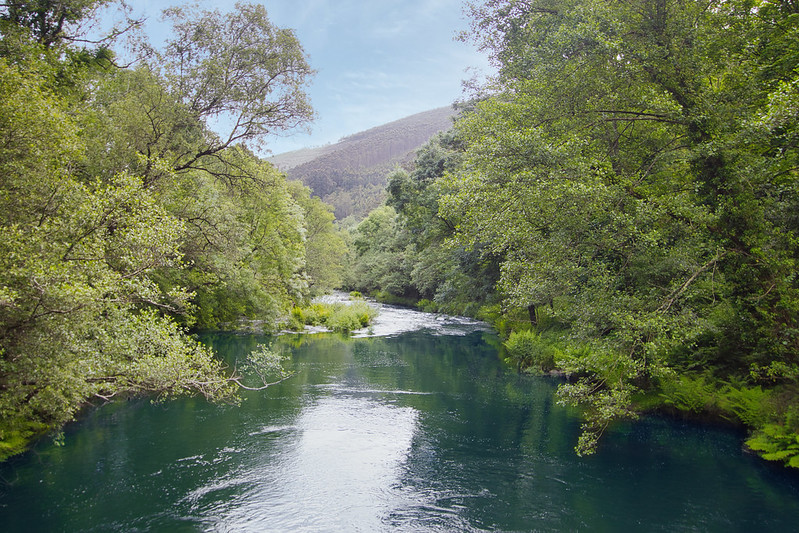
- 08.04.2025
- By Redacción Oscos-Eo
Discovering the Eo River
The Eo River is one of the natural treasures that vertebrate the Oscos-Eo region, in western Asturias, an area declared a Biosphere Reserve by UNESCO.
-
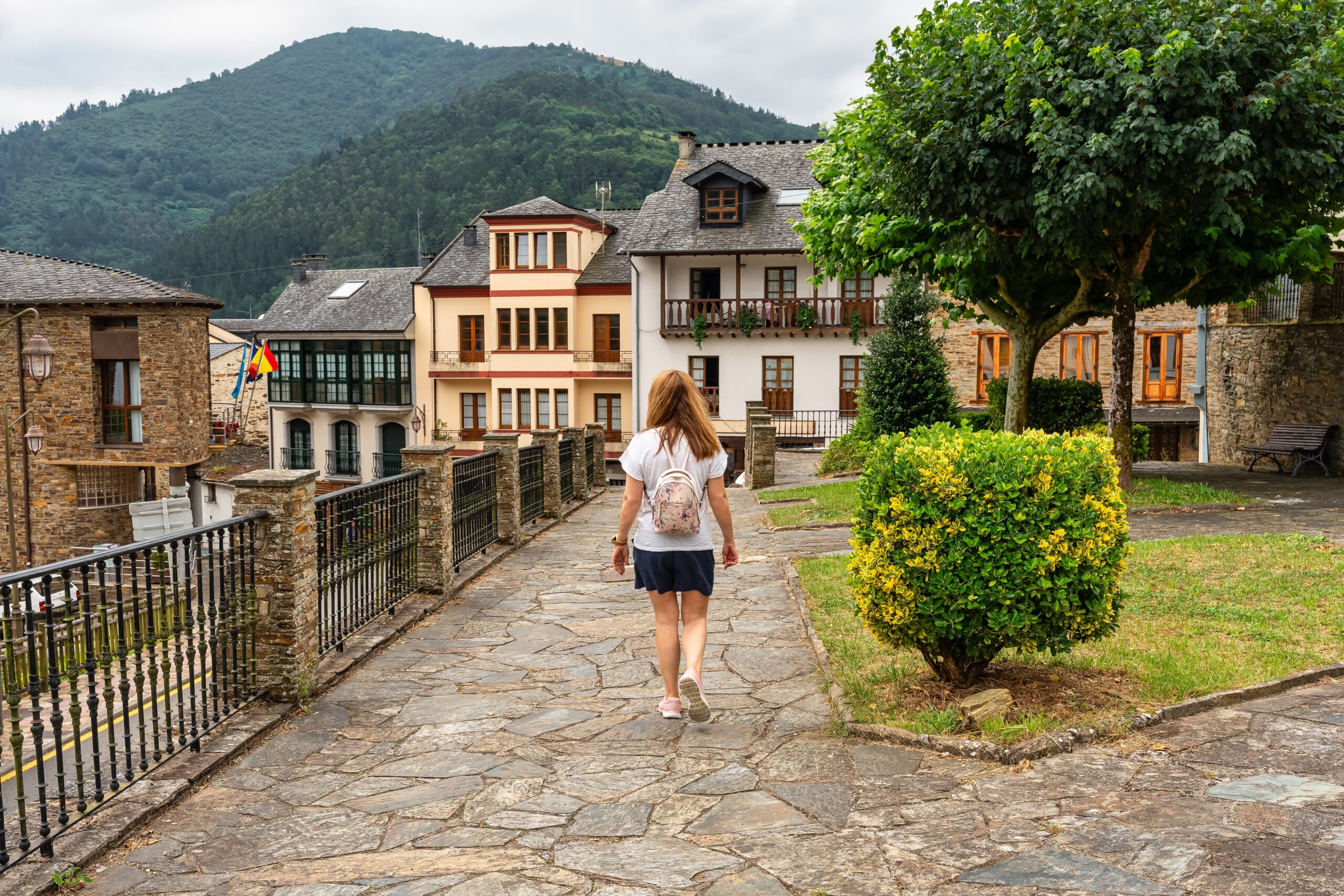
- 08.04.2025
- By Redacción Oscos-Eo
7 hiking trails to enjoy the charm of Oscos-Eo
The Oscos-Eo region, Biosphere Reserve, Eo River, Oscos and Terras de Burón, offers visitors a wide variety of walking routes to enjoy the beauty of a unique landscape.



